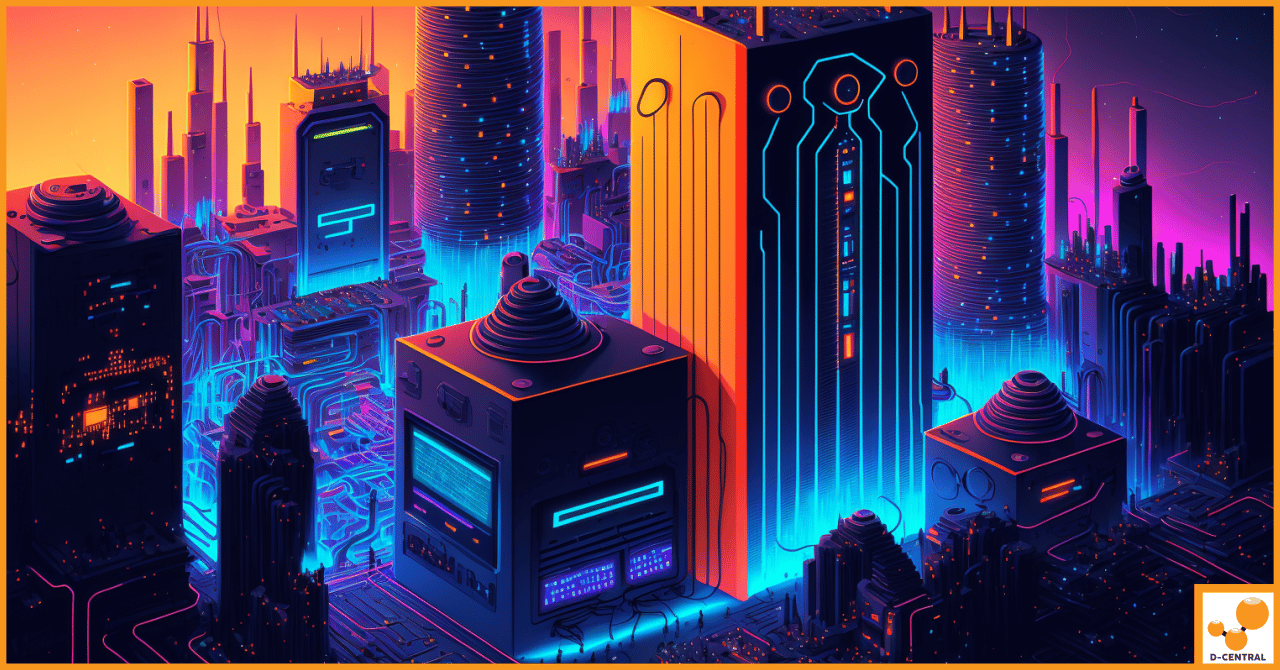
Empowering Small-Scale Bitcoin Mining: A Review of the Canaan Avalon Nano 3
The Canaan Avalon Nano 3 is revolutionizing small-scale Bitcoin mining, offering an affordable and efficient solution for hobbyists and newcomers.
4479 Desserte Nord Autoroute 440, Laval, QC H7P 6E2

The cryptocurrency mining landscape is undergoing a significant transformation, driven by both the evolution of technology and the shifting economics of the industry. As the profitability of traditional Bitcoin mining fluctuates with market conditions, companies are increasingly turning towards innovative solutions to sustain and grow their operations. This shift has led to the integration of cutting-edge technologies such as artificial intelligence (AI), machine learning, and visual effects (VFX) rendering into mining practices. These technologies are not only enhancing the efficiency and capabilities of mining operations but are also paving the way for new applications and revenue streams within the sector. This fusion of Bitcoin mining with AI, machine learning, and VFX rendering is reshaping the industry, setting a new standard for what is possible in the realm of cryptocurrency mining.
The cryptocurrency mining industry is facing a wave of economic pressures and technological advancements that are pushing miners towards new frontiers such as artificial intelligence (AI) and high-performance computing. These pressures include the volatility of cryptocurrency prices, which directly impact the profitability of traditional mining operations. As the rewards of mining diminish or become less predictable, companies are seeking more stable and scalable opportunities within the tech sector.
Technological advancements are making this pivot possible. AI and machine learning technologies offer the potential to optimize the energy-intensive process of mining, reducing costs and increasing efficiency. Moreover, the capabilities of high-performance computing allow miners to venture into new areas like VFX rendering, which demands significant computational power.
Leading this shift are companies like Hive Blockchain and HUT 8, which are repurposing their extensive infrastructure to accommodate more versatile applications. Hive Blockchain, for example, is leveraging its existing facilities to delve into cloud services and AI applications, aiming to reduce its dependence on the fluctuating profits from traditional mining. Similarly, HUT 8 is expanding its focus to include high-performance computing tasks that cater to industries beyond cryptocurrency, such as gaming and digital media, where VFX rendering is crucial.
These companies are not just adapting to survive the current economic climate but are also setting the stage for future growth in the digital economy, demonstrating a proactive approach to integrating advanced technologies with traditional mining operations. This strategic realignment is indicative of a broader trend where the boundaries of cryptocurrency mining are expanding to embrace the broader potential of digital and computational technologies.
Visual Effects (VFX) rendering is emerging as a strategic secondary operation for cryptocurrency miners, particularly those with existing GPU setups. This transition leverages the powerful graphical processing units (GPUs) traditionally used in mining, which are also highly capable of handling the intensive computational demands of VFX rendering. As the profitability of cryptocurrency mining fluctuates, diversifying into VFX rendering provides a stable revenue stream and maximizes the use of available resources.
VFX rendering is crucial in the entertainment industry for creating complex visual effects in movies, television, and video games. The process involves generating photorealistic animations and effects, which require substantial computational power. Miners’ GPU setups, initially intended for solving cryptographic hashes, are well-suited for this task, making it a logical pivot. This not only ensures better utilization of the computational power but also opens new avenues in the booming digital content creation market.
Several companies have already begun to capitalize on this synergy between cryptocurrency mining operations and VFX rendering. For example, Hut 8, one of the leaders in the cryptocurrency mining industry, has expanded its services to include VFX rendering for the entertainment sector. By repurposing some of its GPU capabilities, Hut 8 serves as a computational powerhouse for rendering tasks, thereby not only diversifying its business model but also stabilizing its income amidst the volatile crypto market.
These companies illustrate the potential of integrating VFX rendering into traditional mining operations, demonstrating a successful business adaptation to the evolving technological landscape. By diversifying their operations, these miners are not only enhancing their profitability but also contributing to innovation in digital content production. This strategy reflects a forward-thinking approach to leveraging existing technological assets in new and profitable ways
The evolution from traditional cryptocurrency mining to encompassing high-performance computing and VFX rendering services is demonstrated through the initiatives of companies like Hive Blockchain. This section explores their journey, highlighting both the successful outcomes and the hurdles they encountered during this transition.
Hive Blockchain, initially focused solely on Bitcoin mining, recognized the need to diversify its business model as the cryptocurrency market became increasingly volatile. The company expanded its operations to include high-performance computing (HPC) and VFX rendering services. This strategic pivot allowed Hive Blockchain to utilize its existing GPU resources not just for mining but also for complex computational tasks required in VFX rendering, appealing particularly to the entertainment and media industries. This expansion not only stabilized their revenue streams but also positioned them as a versatile player in both the tech and creative sectors.
However, the transition was not without its challenges. One major obstacle was the need for new infrastructure capable of supporting diversified operations. High-performance computing and VFX rendering require different setups compared to traditional mining rigs, including enhanced cooling systems, more robust power management, and advanced software capabilities. Upgrading infrastructure to meet these requirements demanded significant capital investment and time.
Moreover, the shift also required Hive Blockchain to acquire different expertise. The knowledge and skills needed for high-performance computing and VFX rendering are vastly different from those required for cryptocurrency mining. Recruiting professionals with expertise in these areas or training existing staff presented logistical and financial challenges.
The integration of artificial intelligence (AI), machine learning, and visual effects (VFX) rendering into the realm of cryptocurrency mining represents a significant evolution in the tech and cryptocurrency sectors. This transition has been driven by economic pressures and the need for diversification in response to the volatile nature of cryptocurrency markets. Companies like Hive Blockchain and HUT 8 have led the way, broadening their operational scope from traditional Bitcoin mining to embrace high-performance computing and VFX rendering. This not only utilizes existing GPU setups more effectively but also opens new revenue streams in other high-demand industries.
The journey of incorporating AI and machine learning into mining operations illustrates a crucial shift towards more efficient and optimized practices. These technologies enhance decision-making processes, improve operational efficiency, and predict system failures, ultimately leading to reduced costs and increased scalability.
However, the transition to these new technologies is not without challenges. The need for new infrastructure, different expertise, and substantial initial investments are significant hurdles that companies have to overcome. Despite these challenges, the successful integration of these technologies into mining operations paves the way for a more resilient and versatile industry.
Reflecting on the broader implications, this evolution indicates a merging of technological frontiers. The boundaries between cryptocurrency mining, artificial intelligence, and digital content production are blurring, leading to innovative cross-industry applications that could redefine how businesses operate across the tech spectrum. As this trend continues, it is likely to spur further innovations, encourage sustainability, and drive new economic opportunities within and beyond the cryptocurrency sector.
What is driving the transformation in cryptocurrency mining?
The transformation in cryptocurrency mining is driven by economic pressures, the volatility of cryptocurrency markets, and advancements in technology, including the integration of artificial intelligence (AI), machine learning, and visual effects (VFX) rendering.
How are AI and machine learning being integrated into cryptocurrency mining?
AI and machine learning are being integrated into cryptocurrency mining to optimize the energy-intensive process, reducing costs, increasing efficiency, and improving operational decisions, ultimately enhancing the scalability of mining operations.
What role does VFX rendering play in diversifying mining operations?
VFX rendering, which requires substantial computational power, offers a strategic secondary operation for cryptocurrency miners. Diversifying into VFX rendering, particularly for those with existing GPU setups, provides a stable revenue stream and maximizes the utilization of resources.
Which companies are leading the shift towards integrating VFX rendering into mining operations?
Companies like Hive Blockchain and HUT 8 are leading this shift by repurposing their extensive infrastructure to accommodate versatile applications such as VFX rendering, high-performance computing, and cloud services, diversifying their operations beyond traditional cryptocurrency mining.
What challenges do companies face in transitioning from traditional mining to include AI, machine learning, and VFX rendering?
The transition challenges include the need for new infrastructure, the acquisition of expertise in these new areas, and substantial capital investment. High-performance computing and VFX rendering require different setups, enhanced cooling systems, robust power management, and advanced software capabilities.
What are the potential benefits of this transformation for the cryptocurrency mining industry?
The integration of AI, machine learning, and VFX rendering into cryptocurrency mining can lead to a more resilient and versatile industry, offering new revenue streams, better utilization of computational resources, and innovative cross-industry applications that may redefine business operations across the tech spectrum.
DISCLAIMER: D-Central Technologies and its associated content, including this blog, do not serve as financial advisors or official investment advisors. The insights and opinions shared here or by any guests featured in our content are provided purely for informational and educational purposes. Such communications should not be interpreted as financial, investment, legal, tax, or any form of specific advice. We are committed to advancing the knowledge and understanding of Bitcoin and its potential impact on society. However, we urge our community to proceed with caution and informed judgment in all related endeavors.
Related Posts

The Canaan Avalon Nano 3 is revolutionizing small-scale Bitcoin mining, offering an affordable and efficient solution for hobbyists and newcomers.

In the world of cryptocurrency mining, ASIC miners are powerful tools that can significantly boost profits. Crypto mining, especially with

In the ever-evolving world of digital finance, Bitcoin has emerged as a revolutionary force, reshaping our understanding of currency, transactions,